Have you ever wondered how to improve tractor performance without breaking the bank?
By adding fluid in tractor tires, you can see tangible improvements at an affordable price. In this guide, we’ll go over why adding fluid in your tires might be a good fit for your needs and what types of fluids are available.
With the right information under your belt, you can confidently make decisions about how to keep your tractors running more efficiently than ever.
Take away key points:
- Filling tractor tires with liquid ballast can provide added stability and traction when working on rugged terrain.
- The appropriate amount of liquid tractor ballast needed to fill tires depends on the tire’s size and model. There are heavier liquid lowers that can add more pulling power for the tractor and improve the tractor’s center of gravity.
- Popular choices of liquid tractor ballast include beet juice, water, windshield washer fluid, polyurethane foam, salt solution and others.
- If your tractor dealer is not able to provide liquid ballast installation, search for other local tractor dealers with knowledge of the tractor tire business.
Table of Contents
- Adding liquid ballast in tires: Why & when to do so?
- Common types of fluid to add in tires and how to choose the right one
- Step-by-step guide on how to add fluid to tires
- Adding fluid in tires: Safety precautions you must not ignore
- FAQs
- Should I put fluid in my tractor tires?
- What is the best liquid to fill tractor tires?
- How do you pump fluid into a tractor tire?
- How do you pump fluid out of a tractor tire?
- How do you put windshield wiper fluid in a tractor tire?
- Who puts fluid in tractor tires?
- How much does it cost to put fluid in tractor tires?
- How to tell if there is fluid in tractor tires?
- How much fluid does it take to fill a tractor tire?
- How to change a fluid-filled tractor tire?
- Conclusion
Adding liquid ballast in tires: Why & when to do so?
Keeping the right amount of tractor ballast in your tires is important for your car’s performance and safety on the road.
With more weight on the tires, they are able to make a firmer connection with the ground and allow for higher engine horsepower before tractor tires lose traction.
This means that you can have increased pulling power of the weight pressing the ground (or pushing power if you’re using a front-end loader) without having to worry about loss of traction.
Why add fluid in tires?
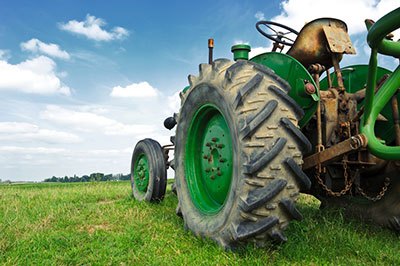
Here are some of the key reasons why you should consider adding fluid to your tires:
Improved fuel efficiency: By maintaining the right fluid levels in your tires, you can reduce resistance and friction on the road, allowing your vehicle to move more easily and efficiently.
Enhanced tire lifespan: Proper fluid levels can also help extend the lifespan of your tires by preventing them from wearing out too quickly or unevenly.
Better traction and handling: Adequate fluid levels can make your tires more responsive and grippy, improving your vehicle’s overall handling and traction. When tires lose tractor, you can always add more weight in form a liquid ballast to improve the pulling power and allow more engine horsepower for heavy-duty tasks.
When to add fluid in tires?
The frequency with which you need to add fluid to your tires will depend on various factors, such as the type of fluid you’re using and your driving habits.
You may also want to consider adding fluid to your tires in the following situations:
Before winter: Adding fluid to your tires before the winter months can help improve their performance on slippery and icy roads. This can be particularly useful if you live in an area with harsh winters.
After getting a flat tire: If you’ve recently fixed a flat tire, you may need to add fluid to the repaired tire to ensure it’s at the correct pressure and performing optimally.
If you detect a liquid ballast leak or puncture: If you notice that one of your tires is consistently losing pressure, adding a fluid sealant may be a temporary fix to avoid having to replace the tire altogether.
Common types of fluid to add in tires and how to choose the right one
Liquid ballast installation is the process of adding fluids to tractor front and rear tires to increase their weight and improve traction and stability.
There are several types of liquid ballast options available, each with their own unique benefits and drawbacks.
1. Plain water
Water is the most common liquid ballasting fluid used in tractor tires because it’s readily available and inexpensive. Water is also an excellent conductor of heat, which can help reduce heat buildup in the tires during prolonged use.
Tires filled with water for liquid ballasting present the risk of freezing in cold weather conditions. For this reason, it’s essential to add freeze-resistant additives to the plain water to prevent it from solidifying and damaging the tires.
2. Calcium chloride
Calcium chloride is another popular option for tire ballast, and it’s often preferred over water for its superior weight and traction benefits. Calcium chloride is a thick, heavy liquid that can add weight to tires and make them grip better on muddy, wet, or icy surfaces.
One of the biggest risks of using calcium chloride is its corrosive properties, which can cause damage to the tires and rim guard over time.
Calcium chloride needs to be handled and moved with care, and if it gets in your eyes or on your skin, you should wash it off right away. However, in case of a tire rupture resulting in spilled fluid and liquid ballast leak, salt solution is not toxic to animals.
3. Antifreeze
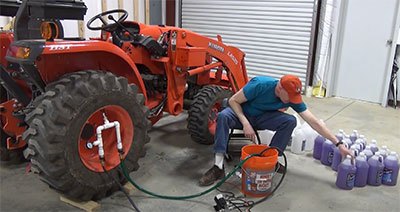
Ethylene glycol antifreeze can be mixed with water to create a more stable and uniform ballasting fluid that can withstand extreme temperatures better.
However, it’s important to note that not all types of antifreeze are suitable for use in tractor tires.
Only certain brands and formulations have the necessary corrosion inhibitors and other additives to protect the tires and rims from damage. Consider using propylene glycol antifreeze as a non-toxic option or other liquid ballast options.
4. Beet juice
Beet juice is another liquid ballasting fluid that’s been gaining popularity in recent years. This fluid is made from the leftover juice from sugar beets. It is non-corrosive and safe for the environment, so it can be used for liquid ballasting.
Beet juice is also a dense, heavy liquid that can improve and add tractor’s wheels weight and traction, particularly on softer or slicker surfaces. Additionally, beet juice weighs around 11.0 pounds per gallon, making it one of the heavier liquid lowers. Tires filled with beet juices offer more tractor power for heavy duty tasks.
But it’s usually one of the costliest liquid ballast selections than other liquid ballast choices, and it may not be easy to find in some places so you should opt for other liquid ballast options.
5. Windshield washer fluid
Windshield washer fluid is another option that can be used for liquid ballast in tractor tires.
However, the windshield washer fluid is non-freeze resistant and it is not recommended as it is designed for automotive use and has a lower freezing point than other options.
This means it can freeze and expand inside the tire, causing damage or a puncture. Additionally, it is one of the costliest liquid ballast selections than other options and may be less effective at providing the necessary weight for heavy-duty applications.
Step-by-step guide on how to add fluid to tires
Step 1: Determine the optimal weight for your vehicle’s tires
The first step in liquid ballast installation to your tractor tires is determining the optimal weight that each tire should carry for maximum performance.
This can vary based on factors such as terrain type, load size, weather conditions and more. If your tractor dealer is not able to provide liquid ballast installation, search for other local tractor dealers with knowledge of tractor tire business.
To calculate the recommended weight for each tire, use a formula like this:
(Engine Horsepower x 0.25) + (50 pounds per wheel if a wheel assist is present) = Recommended Tire Weight
Once you’ve calculated the optimal weight for each tire, note down the figures so they’re easy to remember.
Step 2: Measure and prepare your fluid source
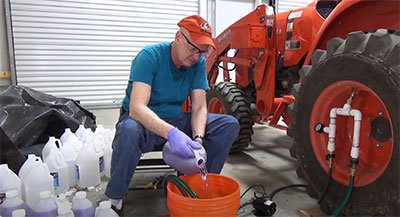
Once you’ve determined how much each tire should weigh, it’s time to measure out and prepare your fluid source.
Depending on what kind of fluid you are using, measure out an appropriate amount into a container or pump according to manufacturer instructions or guidelines from an experienced mechanic.
If necessary, add antifreeze additives or corrosion inhibitors into the fluid as well – particularly if using water which can freeze during cold weather conditions or corrode metal parts over time.
Once all of your liquids are ready, put on protective gear such as gloves and goggles before continuing onto the next step.
Step 3: Fill each tire with ballast fluid
Starting with one wheel at a time, remove any air from inside the tire with an air chuck or siphon pump before attaching either end of the flexible grease gun hose onto its valve stem port and top off its rim cavity with liquid ballast until reaching its desired target weight as noted down earlier.
Double-check that all four wheels are filled up evenly before carefully disconnecting all hoses from their valve stems ports at once when done filling them up completely.
Finally – thoroughly rinse any residual liquid off surfaces such as nearby vehicles or equipment before looping any valve stem caps back in place securely again when done emptying out excess quantities from full containers too. Afterward, by now, after finishing filling up each tire correctly.
Adding fluid in tires: Safety precautions you must not ignore
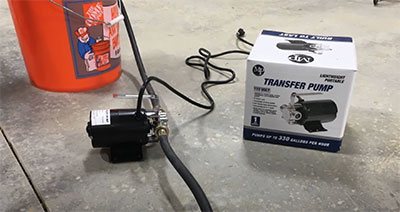
Choose the right fluid: The liquid ballast fluid you choose should be specifically designed for tire ballasting. Do not use water, antifreeze, windshield washer fluid, beet juice, polyurethane foam or any other fluids that are not recommended by the manufacturer.
Check the quantity: Overfilling the tires can lead to excessive strain on the tires and other mechanical components, which can be dangerous. Always check the recommended quantity of fluid to be added to each tire.
Balance and align the tires: After adding ballast, it’s important to balance and align the tires to ensure proper tire wear and handling. Make sure to have an expert check the alignment and balance of your tires when adding weight.
FAQs
Should I put fluid in my tractor tires?
It is possible to add liquid ballast to tractor tires for more tractor power improve the tractor’s center of gravity of your tractor.
Still, it’s important first to consider the manufacturer’s recommendations and consult an expert on the right amount and type of fluid to use.
What is the best liquid to fill tractor tires?
The most commonly used liquid for this purpose is calcium chloride solution, which is a mixture of calcium chloride and water. This solution is non-flammable and has a lower freezing point than water which prevents the liquid from freezing inside the tires during cold weather.
Additionally, calcium chloride solution is readily available and relatively inexpensive.
How do you pump fluid into a tractor tire?
To pump fluid into a tractor tire, locate the valve stem on the wheel, attach the hose from the pump to the valve stem, add the fluid slowly, remove the hose, replace the cap, and recheck the tire pressure.
Before putting any kind of liquid in the tires of a tractor, it’s best to talk to a professional.
How do you pump fluid out of a tractor tire?
To pump fluid out of a tractor tire, remove the valve stem core, insert an air chuck and inflate the tire to force the liquid out into a container, repeat if necessary, deflate the tire, replace the valve core, and consult a professional mechanic or tire dealer for advice.
How do you put windshield wiper fluid in a tractor tire?
The process of putting windshield wiper fluid involves attaching a filling hose to the valve stem, inserting the hose into the container of washer fluid, filling the tire to the recommended amount, ensuring not to overfill, and inspecting the tire for leaks or punctures.
Who puts fluid in tractor tires?
Most of the time, professional mechanics, tractor dealer, tire shops, or companies that service agricultural equipment are the ones who put fluid in the tires of tractors.
These professionals have the right knowledge, skills, and tools to do the job right and safely.
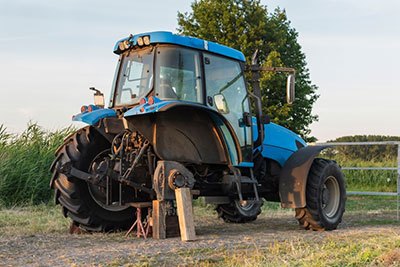
How much does it cost to put fluid in tractor tires?
The cost of putting fluid in tractor tires varies depending on the type of fluid used, the size of the tires, and the service provider’s rates.
On average, the cost of filling tractor tires with calcium chloride solution can range from $200 to $400 per tire. However, this cost can be higher or lower depending on the factors mentioned earlier and it can effect the ride quality.
How to tell if there is fluid in tractor tires?
To determine if there is fluid in a tractor tire, check the weight of the tire, look for a distinctive mark on the tire rim, observe the tractor’s performance, listen for a sloshing sound, and consult a professional mechanic or tire dealer if needed.
How much fluid does it take to fill a tractor tire?
The amount of fluid needed to fill a tractor tire depends on the tire’s size and model. It’s important to look at the manufacturer’s specifications for the tire to find out how much fluid it can hold.
Generally, a standard rear tractor tire can hold anywhere from 30 to 70 gallons of fluid, while front tires hold less.
How to change a fluid-filled tractor tire?
To change a fluid-filled tractor tire, prepare by wearing protective gear and parking the tractor securely, remove the wheel assembly from the tractor, drain the fluid, remove the tire from the wheel, place the new tire on the rim, fill the new tire with fluid, reattach the wheel assembly, lower the tractor and check the tire pressure.
Conclusion
When working on rough terrain, filling the tires of a tractor with liquid ballast can give it more stability and grip.
However, before adding fluid to the tractor tires, it’s important to check the manufacturer’s specifications to ensure you use the appropriate amount of fluid.
To do the job safely and correctly, you should talk to a professional mechanic or tire dealer.
